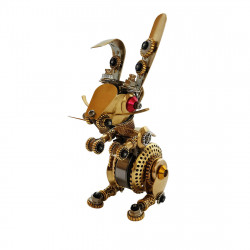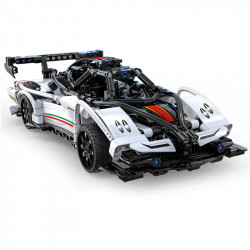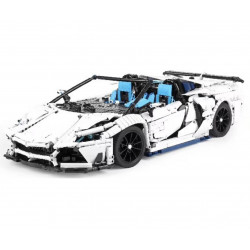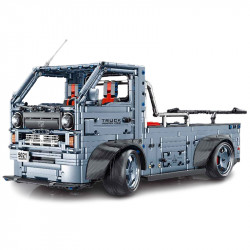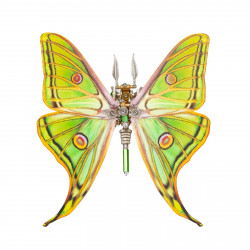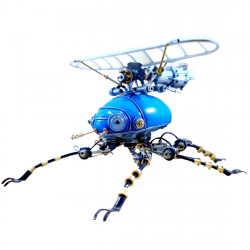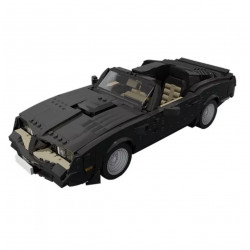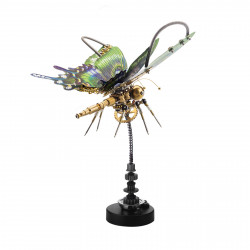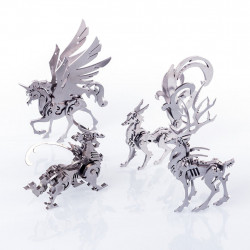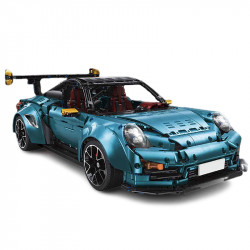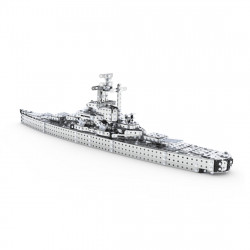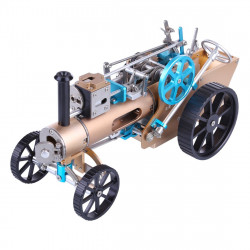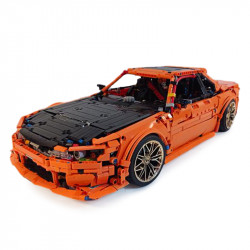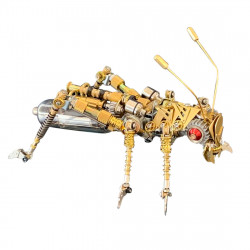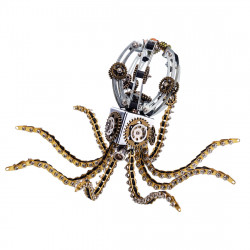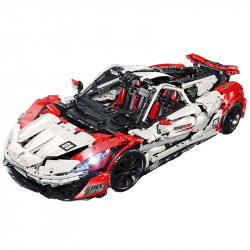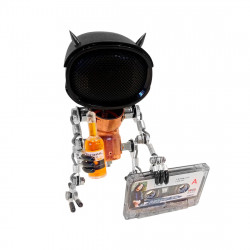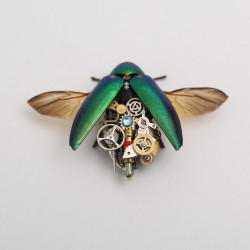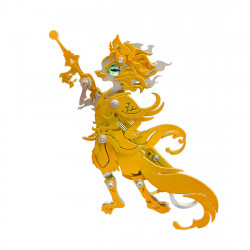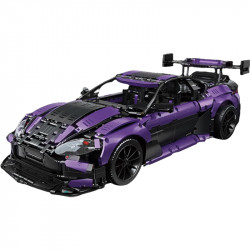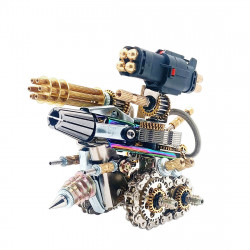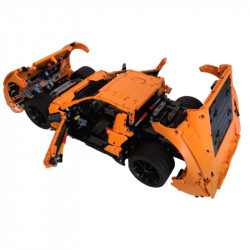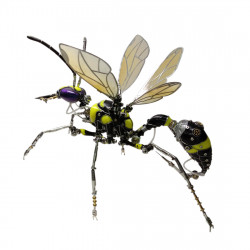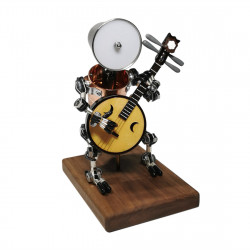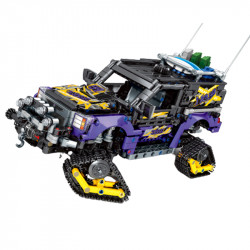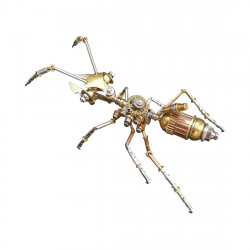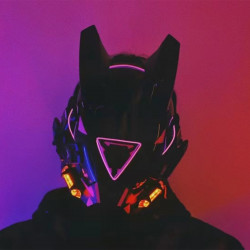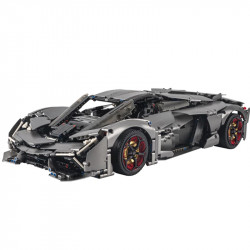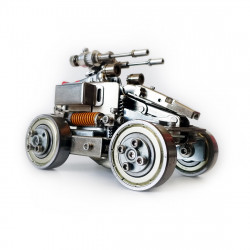Cyberpunk - Born in the Past, Live into the Future

Cyberpunk - Born in the Past, Live into the Future
Recently, cyberpunk has gained popularity once more. The game "Cyberpunk 2077" will undoubtedly be on your social software site, even if you don't comprehend "cyber" or listen to "punk." This 3A game has been the subject of constant controversy since the project's inception in 2012. Station B played the 2018 trailer almost two million times and the 2019 trailer nearly five million times. In less than a day following the official release, there were more than one million online gamers on Steam, despite this year's anticipated release date being delayed three times. Along with the game's distinctive "squeezing body" connection, "Cyberpunk 2077" quickly gained popularity on popular social media sites and was mocked.
The backdrop of "Cyberpunk 2077" is its most alluring feature: a high-tech future society, a spectral world lit by neon lights and advertising screens, cybermen who have undergone biological change, and tiny, filthy, and noir Here, heaven and hell cohabit, there is a wide disparity between the rich and the poor, and there is crime and violence in the alley.
It stands out among the 3A gaming group because of its distinct world vision and the cyber world appears to be the most effective medium for expressing people's vivid imaginations.
Cyberpunk has nothing to do with Versailles and is not a band. The prefix cyber- and the word punk from Cybernetics combine to form the compound noun cyberpunk. Since its inception, punk has been a rebellious term that gives "swearing" a good societal connotation. A rebellious emotional drama between people and robots naturally arises when the two terms are combined. Cyborg is the root of the word. The American mathematician Wiener's 1948 classic book "Cybernetics" is where this idea first appeared. In the book, he blurs the distinction between human and machine by equating the feedback mechanisms of biological and machine systems, offering a theoretical foundation for bio-mechanized transformation.
In a nutshell, cyborgs use outside influences like science and technology to better themselves or how their bodies work. Humans with pacemakers, prosthetic limbs, or dentures can be considered simple cyborgs. As technology advances, additional machines may eventually replace the human body. Once the alteration gets to a certain point, it will become the terrifying cyberpunk person who has been reinvented.
The punk movement of the 1970s is associated with the term punk. Punk encompasses punk rock and music lovers and negative associations like hooligans or worthless items. Punk bands such as The Clash and Sex Pistols are more represented. Most of them still adhere to the idea of "anarchism;" they have odd clothing and a keen understanding of countercultures. These ideas are now ingrained in the cyberpunk philosophy.
The story frame is typical in that financial groups or secret organizations highly control the social order, and the main character takes advantage of the gap to make some breakthroughs. Most of their birth backgrounds are based on a combination of high tech and low life, usually with advanced science and technology, and then compared with a certain degree of collapsed social structure. "Cyborg" and "Cybernetics" established the groundwork for the growth of cyberpunk, and they were exemplified in the recently released science fiction novel "New Wave Movement"!
Born in downtown
The "golden age" of science fiction themes, the whole "new wave" movement, and the "cyberpunk" genre of succeeding generations were all influenced by the work of renowned American science fiction author Philip K. Dick.
Philip K. Dick, a science fiction author who lived from 1928 to 1982, was born in Chicago, Illinois, on December 16, 1928. In addition to being the Hugo and Campbell Award winner, he is said to be "a science fiction writer among science fiction writers."
Philip K. Dick wrote short tales and a few pieces that were published in open-shelf publications around the United States, in addition to the scores of his books that are still in print. Film adaptations have been made of at least seven of his books. Even though renowned science fiction authors like Stanislaw Lem, Robert Heinlein, and Robert Silverberg praised the author throughout his lifetime, the general public hardly ever acknowledged him, and it wasn't until after his passing that he was finally recognized.
Dick's creation pioneered the genre of electric rebels. All of his writings portray Californian American society as morally reprehensible. While his later works addressed spiritual issues, his early novels mainly examined social and political issues. The descriptions of "Scheming Scanner" and "VALIS" are based on his experiences. Simulacra and alternate universes are popular narrative development techniques in which regular people, not members of the galactic elite, dwell in virtual worlds. "There are no heroes in Dick's book."
The science fiction book "Blade Runner" describes how the struggle between humans and replicants intensifies in 2049 when they coexist. The new Blade Runner K generation tracks for the long-lost Blade Runner and works together to end it again—the decisive conflict between replicants and humanity.
The cinematic adaptation of Blade Runner is a massive production that mainly uses artificial lighting. The majority of the movie is shot in the dark, with very few sequences set in bright sunshine. This results in many stark contrasts between light and dark. It is a seminal piece of cyberpunk.
One of its historical accomplishments is that Blade Runner preserved the visual character of cyberpunk for the future, from describing dialogue to lens language, from writing to cinema. In addition to fostering the growth of the creative sector, the quick development of science fiction movies has given rise to a vibrant cyberpunk culture.
It has spread among young people and impacted the American and European worlds.
The protagonist of the "core formula" in the future—Japan—was also greatly impacted by the cyberpunk mania that grew quickly in the 1980s. From the 1980s to the 1990s, Japan's economy grew quickly. Chaebols and super-large corporations governed people's everyday needs. The rate of unemployment stayed high. In Japan, many Internet refugees reside in expensive daily Internet cafes. In addition, they haven't left their homes in forty years and spend their days engrossed in the virtual network world. Young people are being overfed and wantonly bred by the "house" culture.
The Japanese magazine KEROUAC documented the style that appeared on Japanese streets in the 1990s in its 1998 issue. When the economic crisis hit Japan in the early 1990s, the country's economy was in dire straits. Many young people embraced traditional business ideals. Some designers from the fashion industry congregated on the streets to experiment with their own personalities, defying social norms. As a result, punk, cyber, and American street styles started to gain popularity quickly.
Y=year 2=2 K=kilo. Y2K is an acronym for the year 2000. From the mid-to-late 1990s to the early 2000s, Y2K—a popular culture characterized by optimism and technological utopianism—became dominant. Retro, futuristic, modern, and avant-garde styles are all part of Y2K aesthetics.
Y2K was initially a technological disaster brought on by the Thousand Bugs Problem, which led to widespread computer failure in the year 2000 rather than a hot fashion trend. It was the beginning of the cyberpunk information paradise.
In essence, Y2K was distinct from other styles because it was formed in a serene daydream and captured the most imaginative and lovely human dreams of the time.
At that time, "aesthetic correctness" meant flamboyant personalities and rich, highly saturated colours. Y2K's components include a three-dimensional sensation of technology, brilliant metal substance, transparency, candy colour, computer data pages, and futuristic aspects. Contrasting hues, color block splicing, and other elements produce a fascinating sense of cyber fashion, creating a powerful visual effect.
In his solo works, Californian cinema digital artist Nick Sullo (Xsullo) mainly employs a cyberpunk aesthetic. He first saw and became interested in digital art around the start of 2000. Since then, he has begun producing a variety of works using the subject matter technology that he has mastered. The sci-fi aesthetic is prevalent throughout Xsullo's artwork, which conveys a sense of ease and freedom. He uses bold lines and incredibly vibrant colours to convey surrealism and cyberpunk techno-dystopian motifs.
These pieces frequently evoke a sense of the end and the future. They are simultaneously eerie, overdone, and appealing. He uses acrylics and spray paint on canvas to bring his intensely moving computer pieces into the physical world. Each piece has a powerful, oppressive punk aesthetic. The sense of visual appeals to young people effortlessly.
It is easy to think of the world that emerged from the clash of punk and cyber as a gloomy high-tech future. Based on works of literature, film, and television, this universe has three clear features.
colourful image system
Cyberpunk's most notable characteristic is its powerful visual impact, particularly in urban environments. Cyberspace cities frequently teem with electronic data; any building's exterior could be a display screen. Everywhere you look, ads are shown in stereo. For instance, numerous 3D projections in "Ghost in the Shell" are visible to the unaided eye throughout the streets.
Cyberpunk cities are typically coloured in cool hues like purple, blue, and green. On the one hand, it fits our vision of a technologically advanced, chilly society. However, combining these hues frequently produces a striking visual effect akin to neon.
Cyberpunk cities are frequently filled with high-rise structures, with cold glass or metal façade to convey the future feeling of superior technology.
Because of their visual components, cities like New York, Tokyo, Hong Kong, and Chongqing frequently become "sacred places" for cyberpunk enthusiasts.
In addition, the city will have a slum-like street scene, with dark and filthy streets, in contrast to the tall structures, because of the dismal tone of cyberpunk itself. In cyberpunk fiction, these are the locations where covert transactions frequently occur.
Cybermen and Robots
Future cyberspace will likely be populated by a vast number of modified humans and robots, even without physical artificial intelligence, because of the advancements in information technology, biotechnology, gene technology, and artificial intelligence. Additionally, the globe has gotten more varied due to the high level of globalization and the breakup of nations, and it is now commonplace in every metropolis to see a mix of humans, robots, and races.
Many people think that cyberpunk is an unattainable future, but if we look at the state of technology now, we will see that it is a near-future fantasy. Our lives have started to "cyborgize" in a way.
What will the cyberculture industry look like?
Since its inception, the cyberpunk aesthetic has been the focus of several literary works, motion pictures, and television shows. Motivated by these, many cyberpunk-style products emerged as people started to embrace and even appreciate this viewpoint and aesthetic.
Electronic items using futuristic technologies are one category. Caviar, a luxury brand from Russia, introduced this customized version of "Cyberpad" as an example.
Additionally, certain keyboards and headphones have a cyberpunk aesthetic.
Clothing is another product sector that has been affected by cyberpunk. Numerous major fashion labels have used cyberpunk aspects in their designs.
"Techwear" is one of the variants of cyberpunk that emerged from its pursuit. Like the cyberman's altered body, "techwear" apparel aims for technological beauty and usefulness. They have excellent, cutting-edge, and contemporary designs for technical enhancements.
Representative brand ACRONYM
However, most items on the market are not regarded as authentic cyberpunk; instead, they merely appropriate the concept or visual elements of cyberpunk, and the advancement of technology and society is far from the stage of the cyberpunk world. As a result, it is challenging to predict with precision what shape the cultural industry will take at that point. However, we can deduce several features of future cultural products based on the state of technology today, the Internet's development pattern, and some literary, cinematic, and television imaginations.
Virtualization
People can use the Internet as a virtual identity in the virtualized world created by all cyberpunk works. Future physical items may also be virtualized, for example, by using wearable technology to create the illusion of augmented reality (AR).
Furthermore, virtual idols could gain popularity. Future idols could be created based on the demands of all, better-satiating followers' cultural inventiveness and adding to the enjoyment of chasing stars. This trend is already extremely evident.
immersive
Cultural items will then transition into the immersive mode of multisensory linking while remaining in the visual or auditory sense. The virtual world of "Ready Player One" might come to pass due to the ongoing advancements in VR technology, which will also alter current forms of entertainment.
Customization
Cultural scholars have long criticized the artistic industry for its mass production methods. Still, as artificial intelligence, 3D printing, and virtual reality technologies advance to a certain point in society, creative products and content will be entirely transformed once the manufacturing sector significantly improves. Standardization and bulk production may eventually give way to customized and varied output. Cultural products, particularly virtual products, will also be tailored to customers' tastes or requirements, and cultural consumption will typically become a personalized and customized method of consumption.
While this page has offered many amusing interpretations of cyberpunk, the genre is generally dismal and pessimistic, much like the shadowy areas of cyber city. In cyberpunk, "high tech, low life" is the guiding principle. Here, the standard of human habitation has declined rather than improved. Through biological metamorphosis, humans in the cyber world immobilize themselves and enter the virtual world to escape reality. Overall, cyberpunk is a dystopian nightmare of technology in which the mind is consumed by matter.
However, technological advancement is not limited to the cyberpunk realm. We should always be on guard, but we can also have hope. Cyberpunk style has once again taken over the fashion industry in recent years. It looks to the future while paying respect to the classics. Future magic, optimistic expectations, and improved technology collide with the traditional nostalgic sense of time. While styles change over time, artistic genius never goes out of style.


